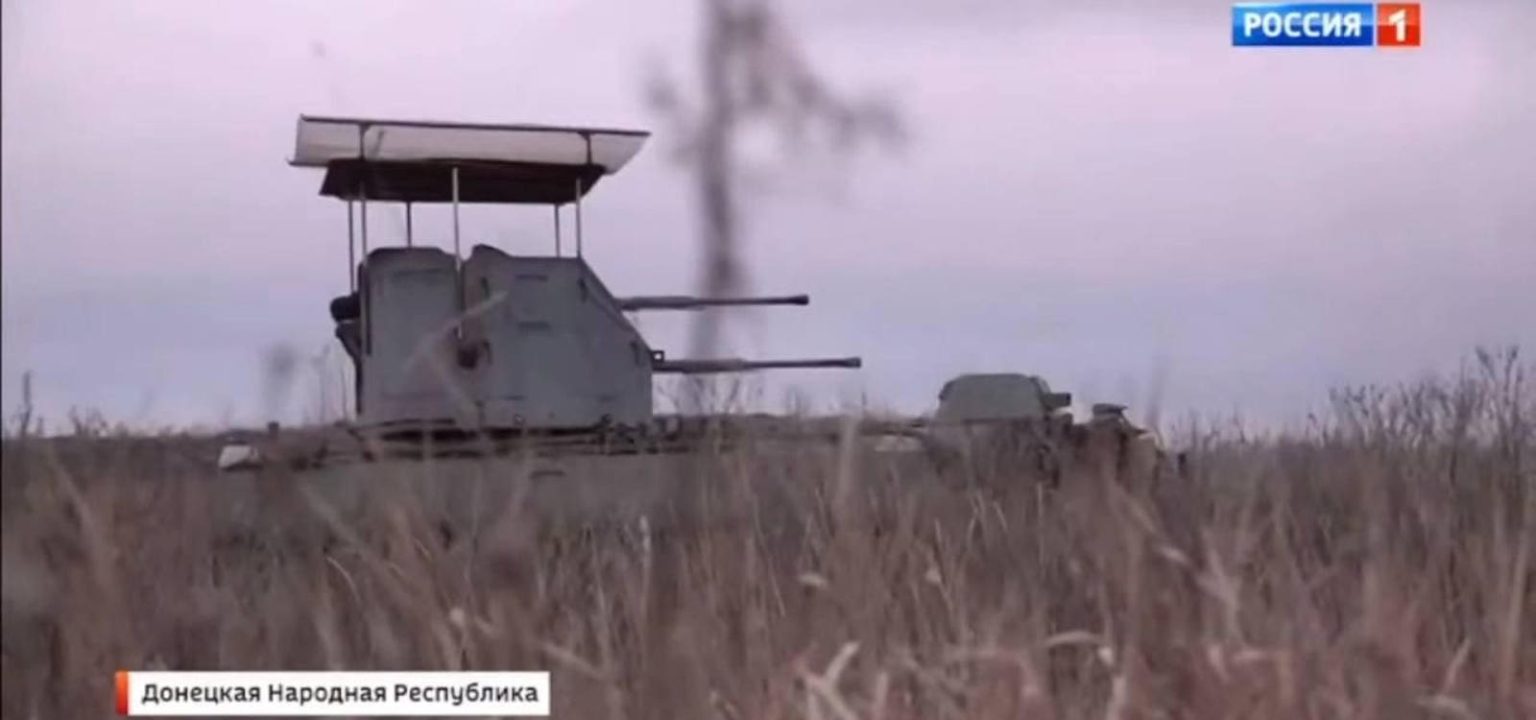Russia’s jankiest armored fighting vehicle is evolving. A recent Russian media report from the brutal battle for Avdiivka, a Ukrainian stronghold in eastern Ukraine’s Donetsk Oblast, depicts at least one old MT-LB armored tractor armed with an old 2M-3 naval turret fitted with over-under 25-millimeter autocannons.
We’ve seen these MT-LB-2M-3s before. Sitting outside the workshop that apparently helps to produce them. Riding trains from Russia into the Ukraine war zone. Standing guard alongside civilian construction crews in occupied Ukraine, apparently in order to protect the crews—then busy digging fortifications for the Russians—from Ukrainian drones.
But the MT-LB-2M-3 in the recent media report is different than most of its vehicular kin. The 2M-3’s guns are more flush with the hull of the MT-LB. The turret, in other words, is somewhat integrated with the vehicle that carries it.
This is a change for the line of do-it-yourself MT-LB fire-support vehicles, which should be able to hurl 1.5-pound shells out to a distance of 2,500 yards at a rate of 300 rounds per minute per gun.
The Russians began cobbling together the weird vehicles back in the spring, mixing and matching old stored hulls and turrets in what obviously was a desperate bid to make good escalating losses of modern combat vehicles in the now 22-month wider Russian war on Ukraine.
The vehicular Frankenstein’s monsters—Frankenvehicles—are an emergency expedient. And their design reflects that urgency.
In most cases, the 1950s-vintage MT-LBs and their even older 2M-3 turrets have been minimally integrated. Technicians apparently have just welded or bolted the two-ton turrets to the tractors without blending their hydraulics and electrical systems—and without rebalancing the MT-LB’s center of mass.
“There is some feeling that the hydraulics of the 2M-3 were abandoned and switched to fully manual guidance, since this is the simplest solution that does not require labor—but predictably affects the effectiveness of firing,” Edward Perov, a close observer of Russian combat vehicles in Ukraine, noted on his blog.
The result has been a fire-support vehicle that shakes, a lot, while shooting. A vehicle whose three or four crew members might fire toward a target, but without any degree of accuracy at range. It can suppress, but probably can’t destroy.
And the thinness of the MT-LB’s armor—a determined enemy machine-gunner could immobilize the tractor—means the vehicle can’t safely roll closer to the enemy in order to improve accuracy.
Better integration should mean less vibration. One hint that’s happening is visible in the recent media report from Avdiivka. The MT-LB’s 2M-3 turret is much shorter than the turrets on previous versions of the same DIY vehicle type.
The tube-shaped base of the turret isn’t visible. Technicians either removed the base, or sank it into the MT-LB’s passenger compartment.
Either possibility should make for a more balanced, stabler firing platform. At the very least, Russian technicians have begun to address the MT-LB-2M-3’s vibration problem. That doesn’t mean they’re integrating the vehicle’s and turret’s hydraulics, of course. But stabilizing the firing platform is a start.
And it reflects a wider trend. Both the Russian army and Ukrainian army increasingly rely on DIY Frankenvehicles, owing to their mutual inability to buy or build enough brand-new and fully-integrated vehicles to keep pace with battlefield losses.
The first Frankenvehicles on both sides have been pretty embarrassing. But with time, both armies have gotten better at combining hulls, turrets and guns. As the wider war grinds toward its third year, expect the DIY combat vehicles to continue improving.
Read the full article here





